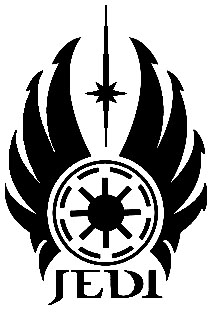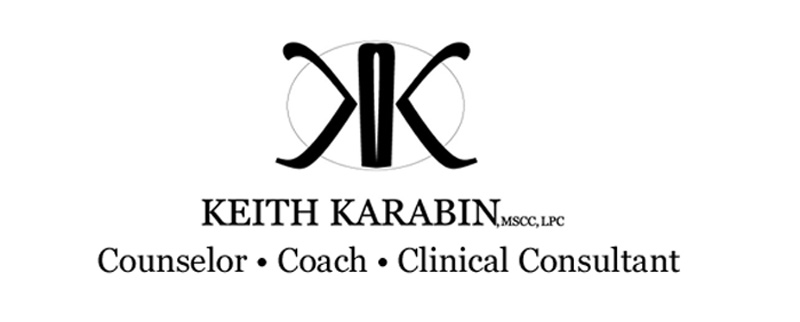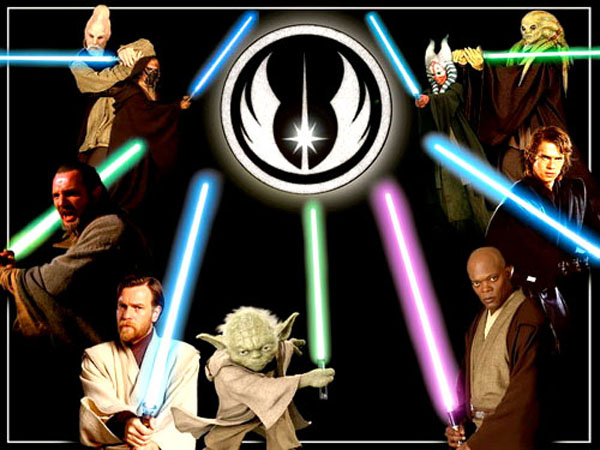Jedi Without an Order: Professional Identity Crisis
“A Jedi’s strength flows from the Force. But beware of the dark side.
Anger, fear, aggression; the dark side of the Force are they…If once you
start down the dark path, forever will it dominate your destiny, consume
you it will, as it did Obi-Wan’s apprentice.”
-Jedi Master Yoda, Star Wars: The Empire Strikes Back
It is human nature to dream of what we will be when we grow up, and to walk a path toward that dream as we develop. Jane E. Myer, “leader in the counseling profession through her roles as a rehabilitation counselor, counselor educator, supervisor, mentor, and advocate” was no different. “I knew when I was a teenager that I wanted to be in a helping profession…I was inspired to think of being a force for positive change in the lives of others” (Nichols & Carney, 2013, p. 242).
Way back in 2010 I wrote of my struggle in finding a professional title in Keith Karabin, B.A.D.A.S.S. Now I find, years later, my struggle was not unique, and in fact, representative of a larger struggle: The Counseling Profession itself is lacking in a clear, unified identity. Like the Jedi Knights of “long ago,” we’ve let our fight against the Dark Side keep us divided, and that is where we are weakest. To be most effective we need unity, vision, cool tools and mentorship—and maybe a cool name—just like the Jedi Order.
 Like walking the path from Padawan to Jedi Knight to Master, Myer has been that force for positive change for countless patients in her role as a counselor and, as she developed her professional identity from counselor to counselor educator, she became that force in a profession that remains in dire need of it. She did not seek out leadership and even her own professional identity development was not fully self directed (Nichols & Carney, 2013). Perhaps this is because the path of the counselor is not clear or well defined by the profession as the path of the Jedi.
Like walking the path from Padawan to Jedi Knight to Master, Myer has been that force for positive change for countless patients in her role as a counselor and, as she developed her professional identity from counselor to counselor educator, she became that force in a profession that remains in dire need of it. She did not seek out leadership and even her own professional identity development was not fully self directed (Nichols & Carney, 2013). Perhaps this is because the path of the counselor is not clear or well defined by the profession as the path of the Jedi.
Gafanaki (2010) defined “Professional Development” as “a temporal process of transformations described in terms such as progress versus regress, evolution versus devolution, and/or improvement versus decline” which calls to mind a cascade of indeterminate natural events rather than a career path. Interactions with the Commonwealth of Pennsylvania Department of State Board of Social Workers, Marriage and Family Therapists and Professional Counselors yield a similar result. They could be considered the Jedi Council of Pennsylvania, and they are just as criptic. Unless a professional moves from a Bachelors Degreed neophyte to Licensed Professional Counselor within the safety of a university program they are left to negotiate the wilds of Licensure on their own. The result is a guidance process of “submit, pay, be judged then rejected,” which is fraught with repeated application re-submissions and fees. Even the fractured title of the Board conveys a division of ideology which is ironic in a profession aligned in the desire to help others find “wellness” by organizing and unifying their lives.
Our Saber is a Wheel
“It’s your father’s lightsaber…an elegant weapon for a more
civilized age. For over a thousand generations, the Jedi Knights
were the guardians of peace and justice in the Old Republic.
Before the dark times, before the Empire.”
-Jedi Master Obi-Wan Kenobi, Star Wars: A New Hope
According to Myers and Sweeny (2008) the concept of seeking wellness can be attributed to the Greek  philosopher Aristotle, and implies an inherent moderation and balance in life. To help their clients find this wellness Myers and Sweeny (2008) crafted the Wheel of Wellness using Adlerian Individual Psychology as “an organizing principle…in which body, mind, and spirit are integrated by the individual to live life more fully within the human and natural community” (Myers & Sweeney, 2008, p.5).
philosopher Aristotle, and implies an inherent moderation and balance in life. To help their clients find this wellness Myers and Sweeny (2008) crafted the Wheel of Wellness using Adlerian Individual Psychology as “an organizing principle…in which body, mind, and spirit are integrated by the individual to live life more fully within the human and natural community” (Myers & Sweeney, 2008, p.5).
The Wheel is a strikingly well-balanced and intuitive graphic representation of healthy living. A tool, like the lightsaber, which could represent the best of the counseling professions. Through revision “17 components depicted in the final version of the Wheel of Wellness…interact with contextual and global forces to influence holistic well-being” (Myers & Sweeney, 2008, p.5). using the Wheel as a therapeutic tool, clients who have great difficulty in self and life management gain the clarity and balance which is key to wellness when paired with continued resilient living and relapse prevention. Yet, clarity difficult to find when seeking professional identity due to counseling’s very focus on “the wellness model” and how it is implemented.
It’s Not Just “Light Side vs. Dark Side”
“Luke, you’re going to find that many of the truths we cling to
depend greatly on our own point of view. When I first met him,
your father…I was amazed how strongly the Force was with him.
I took it upon myself to train him as a Jedi. I thought that I could
instruct him just as well as Yoda. I was wrong.”
-Jedi Master Obi-Wan Kenobi, Star Wars: The Empire Strikes Back
 Mellin, Hunt & Nichols (2011) explored the struggle to find professional counselor identity and collaboration between the “helping professions;” counseling, psychology and social work. The majority of counseling respondents identified with the statement that “[psychologists and social workers] both work from the ‘medical model’ and we believe in ‘the wellness model’” (Mellin, Hunt & Nichols, 2011, p. 5). While this general definition seems unified, the “tension between the desire…to align with the phliosophical orientation of human development, prevention and wellness versus practice realities…” of how that is implemented “…was clear” (Mellin, Hunt & Nichols, 2011, p. 2).
Mellin, Hunt & Nichols (2011) explored the struggle to find professional counselor identity and collaboration between the “helping professions;” counseling, psychology and social work. The majority of counseling respondents identified with the statement that “[psychologists and social workers] both work from the ‘medical model’ and we believe in ‘the wellness model’” (Mellin, Hunt & Nichols, 2011, p. 5). While this general definition seems unified, the “tension between the desire…to align with the phliosophical orientation of human development, prevention and wellness versus practice realities…” of how that is implemented “…was clear” (Mellin, Hunt & Nichols, 2011, p. 2).
The counseling disiplines agree that people develop along a continuum in which their ability to recover and learn from mistakes to prevent future mistakes is key to lasting wellness. However, the myriad of means with which counselors help clients achieve resilience and prevention—developing their own wellness identity—seems at present to actually clutter the development of a unified counselor identity.
Grafanaki (2010) said that understanding of professional development could help lessen the “negative impact of professional training” but she had been referring to “the sense of incompetence” or “burn out” in trainees. An unexpected negative impact seems to be that, as counselors define their roles and progress in professional development “tension between a unified counseling professional identity and identity based on area of specialization is also evident within the field [which] seems to be a historic and still unresolved philosophical difference” (Mellin, Hunt & Nichols, 2011, p. 2).
The Power of the Force
“The Force is what gives a Jedi his power. It’s an energy field
created by all living things. It surrounds us and penetrates us.
It binds the galaxy together.”
-Jedi Master Obi-Wan Kenobi, Star Wars: A New Hope
These differences can be resolved just like the spokes on the Wheel of Wellness. If Myers and Sweeny can depict a balanced life of 17 interwoven components, the counseling profession can also eventually depict a holistic synergy of  its component disiplines. Perhaps since “counseling is the youngest of the helping professions,” this division is just the passion and cliquishness of youth, and from age will come wisdom if counselors focus on the role that unites them (Mellin, Hunt & Nichols, 2011, p. 2). No matter the specialization, the role of a counselor is to be that “force for positive change” to a client who has lost the will to be that for themselves. To best fulfil that role, counselors must employ both the wellness model and the medical model as they help their clients build resilence and prevent relapse.
its component disiplines. Perhaps since “counseling is the youngest of the helping professions,” this division is just the passion and cliquishness of youth, and from age will come wisdom if counselors focus on the role that unites them (Mellin, Hunt & Nichols, 2011, p. 2). No matter the specialization, the role of a counselor is to be that “force for positive change” to a client who has lost the will to be that for themselves. To best fulfil that role, counselors must employ both the wellness model and the medical model as they help their clients build resilence and prevent relapse.
Technology itself may be like the Jedi’s lightsaber, or the Wheel of Wellness for the counseling profession; a clarifying and balancing tool. “As a child I had to be my own search engine,” Myers said, “and it took a bit more time to satisfy my curiosity about life and people” (Nichols & Carney, 2013, p.242). The internet is full of professional mental health organization sites like the ASCA and AMHC, each offering some level of developmental perspective, but they are not unified in that view. Even the Pennsylvania Board of Social Workers, Marriage and Family Therapists and Professional Counselors has a web site which allows applicants to track their most recent stab at professional development. The ability to network via Skype and similar audio/visual mediums is allowing for more meaningful communication and collaboration across the planet, and across disciplines.
Counselors in “the youngest of the helping professions” have the greatest means to unify professional identity and outline a clear professional developmental path. Technology will be the tool, but if that “curiosity about life and people” remains at the spiritual center of the profession’s developing Wheel of Professional Wellness then the benefit to both client and counselor will be worth the momentary crisis because together we can bring balance to the Force.
__________________________________________________
Grafanaki, S. (2010). Counselors in training: Journeys of professional transformation.Counseling and Psychotherapy Research, 10(3), 152.
Mellin, E. A., Hunt, B., & Nichols, L. M. (2011). Counselor professional identity: Findings and implications for counseling and interprofessional collaboration. Journal of Counseling and Development, 89(2), 140–147.
Myers, J. E., & Sweeney, T. J. (2008). Wellness counseling: The evidence base for practice. Journal of Counseling and Development, 86(4), 482–493.
Nichols, L., & Carney, J.V. (2013). Jane E. Myers: The Evolution of an Advocate. Journal of Counseling and Development, 91, 240-247.
State Board of Social Workers, Marriage and Family Therapists and Professional Counselors. (2014).


